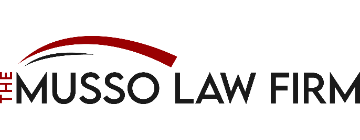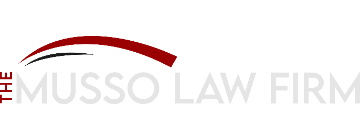I want you to remember this and remember it well: “A nursing home is a business.” While many nursing homes are not for profit or so called charitable organizations, the large majority of them are a business like any other. And just like every other business they have one main goal; to make money. If you asked me what McDonald’s business is I would not tell you making hamburgers. I would tell you making money. They just use hamburgers to make their money. American Airlines doesn’t fly planes. They fly planes and operate airports to make money. And nursing homes don’t take care of the elderly, they take care of the elderly to make money. But there is a very unique element to the nursing home business. Namely, how much they can charge for their “service”. Most businesses have two ways to make a profit:
1) They can increase the price of their product or service
And/or
2) They can decrease the cost of doing business (ie. Overhead).
Most businesses in America are always working on both elements of the profit equation. They are trying to be more cost efficient by “reducing waste” and thereby lowering their overhead so that they get to keep more of the dollars they generate. At the same time they are always looking for ways to increase their prices while maintaining sufficient quantity of customers. Ideally, they will charge high prices while maintaining low costs. The nursing home business has an inherent limitation that other businesses don’t have – they are paid predominantly by government insurance programs. It’s a good time to discuss the two primary payor sources for most nursing home placements:
1) Medicare
Medicare is the federal health insurance program for people who are 65 or older, certain younger
people with disabilities, and people with End-Stage Renal Disease (permanent kidney failure
requiring dialysis or a transplant, sometimes called ESRD).
In order for a nursing home stay to be covered by Medicare, you must enter a Medicare-
approved skilled nursing facility or nursing home within 30 days of a hospital stay that lasted at least three days. Furthermore, Medicare is not an unlimited funding source. In fact, Medicare covers only up to 100 days of skilled nursing care per illness. The care in the nursing home must be for the same condition as the hospital stay. In addition, you must need skilled care. This means a physician must order the treatment and the treatment must be provided daily by a registered nurse, physical therapist, or licensed practical nurse. Finally, Medicare only covers care as opposed to custodial care. This means it covers care only for people who are
likely to recover from their conditions, not care for people who need ongoing help with performing everyday activities, such as bathing or dressing.
2) Medicaid
Medicaid in the United States is a joint federal and state program that helps with medical costs for
some people with limited income and resources. Medicaid also offers benefits not normally covered
by Medicare, like nursing home care and personal care services. The Health Insurance Association
of America describes Medicaid as a “government insurance program for persons of all ages whose
income and resources are insufficient to pay for health care”
The Patient Protection and Affordable Care Act significantly expanded both eligibility for and federal funding of Medicaid. Under the law as written, all U.S. citizens and legal residents with income up to 133% of the poverty line, including adults without dependent children, would qualify for coverage in any state that participated in the Medicaid program.
How does the fact that the Government pays for the majority of nursing home care change the business model of a nursing home when compared to other businesses? The Center for Medicare and Medicaid put it this way:
Section 4432(a) of the Balanced Budget Act (BBA) of 1997 modified how
payment is made for Medicare skilled nursing facility (SNF) services.
Effective with cost reporting periods beginning on or after July 1, 1998,
SNFs are no longer paid on a reasonable cost basis or through low volume
prospectively determined rates, but rather on the basis of a prospective
payment system (PPS). The PPS payment rates are adjusted for case mix and
geographic variation in wages and cover all costs of furnishing covered SNF
services (routine, ancillary, and capital-related costs).”
Basically, what this means is pretty simple. Before 1998 Nursing Homes could bill Medicare or Medicaid for the “reasonable costs” of their services. The bill would be evaluated for reasonableness by the agency and paid or partially paid. Under this old scheme the nursing home was a lot like most businesses in that it could increase its business profits through the two traditional mechanisms: 1)
raising prices and 2) lowering costs or overhead. But that all changed in 1998 when the Balanced Budget Act created what we call PPS or Prospective Payment System. Now, Medicaid and Medicare decide how much the nursing home’s bed is worth. How much its care, supplies and the like are worth. They determine in advance how much a particular resident SHOULD cost to care for. As a
result nursing homes have two primary profit pathways:
1) Over-estimate the needs of the resident during assessments so Medicare will
believe the resident requires more care than they actually need
AND
2) Lower costs so they keep more of the revenue they generate.
The net effect of these strategies is that nursing homes often overstate how sick or
functionally limited a resident is to overstate the amount of work they will have to do
when billing Medicare. I have seen nursing homes approving all sorts of physical, occupational and speech therapies for residents who couldn’t possibly benefit from such therapies. I have seen residents classified as needing extensive assistance with all activities of daily living such as feeding, toileting, dressing, and bathing when in fact the resident was capable of doing far more than the assessment stated. This is a nice situation for the nursing home because they can tell Medicare that the resident needs to be turned and repositioned as well as fed and bathed by their staff to maximize their reimbursement rate while not actually needing to provide that care because the resident is fully capable of performing those tasks. At that point, the nursing home need only DOCUMENT that such care is being provided to be paid in full at the higher rate. In addition to artificially inflating reimbursement rates from Medicare, nursing homes maximize profitability by reducing overhead costs of their business. In fact, for nursing homes that do not want to blatantly commit Medicare Fraud, this is the ONLY way to truly improve profitability as there is no way to raise the price of their services.
Here’s the problem…there aren’t a lot of ways to reduce a nursing home’s overhead. The rent/mortgage on the building is very difficult if not impossible to manipulate. They can choose to purchase lower quality food, linens and supplies of course but the truth is
they are almost always using the cheapest version of these items that they can get away with and once they reach the bottom rung of such costs they have no more moves to make. There is one expense however that is highly manipulatable and it is the HIGHEST cost of running a nursing home business – staffing. Whether its nurses or certified nurse aides, reducing the quantity or quality of nursing home staff can result in significant cost savings to the nursing home business. By removing a nurse or aide from one unit or multiple units, from one shift or multiple shifts can drastically change the financial equation of the operation. If you multiply those savings by multiple weeks,
months or years the numbers can be staggering. For multi-facility national chains the costs savings grow exponentially and enter the millions. In short, keeping staffing levels low is the single best way to maximize profitability. As a result the nursing home is always at risk of crossing the danger threshold where staffing levels endanger the safety and health of the residents in the pursuit of profit. The rest of this story will ultimately go something like this- A client will walk into my office and say one Saturday, my mom rang her call bell for an hour and nobody came. She needed to go to the bathroom really bad but nobody came. She is a dignified woman and she wasn’t about to wet herself if she could avoid it. After an hour of ringing the bell with no response she tried to get up unattended, and fell on her way to the bathroom. When she was found five hours later she had a fractured hip and was in tremendous pain. She waited for 5 hours to be found and her heart was racing when they found her. At 92 years old the hip surgery really took a toll on her and she was
bed and chair bound for the rest f her life. She developed pneumonia from being in bed so long and when she was admitted to the hospital they found a stage IV bedsore the size of a grapefruit all the way to her tailbone. It was infected since she was using a diaper since the surgery and sepsis had infected her blood. She had a bad Urinary tract infection since she was catheterized following the hip surgery and they didn’t change it often enough. She died a horrible death with a 104 degree fever and open infected wounds all over her body.” This is the result of a nursing home simply being a business in the world of prospective payment system.
Ultimately, if families understood this concept-that a nursing home is a business and they empowered themselves before coming into my office, we could drastically reduce the amount of nursing home cases across the US.



